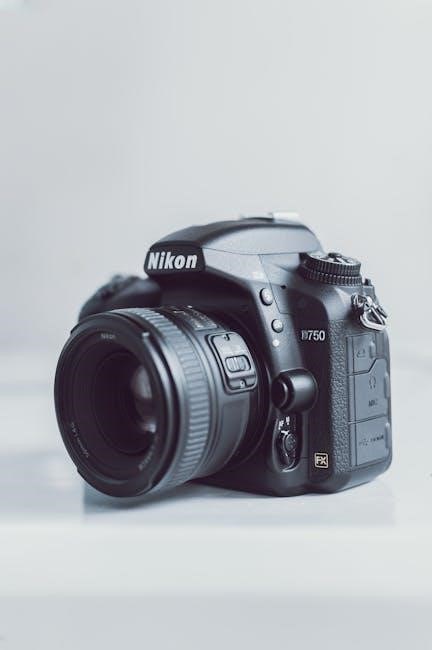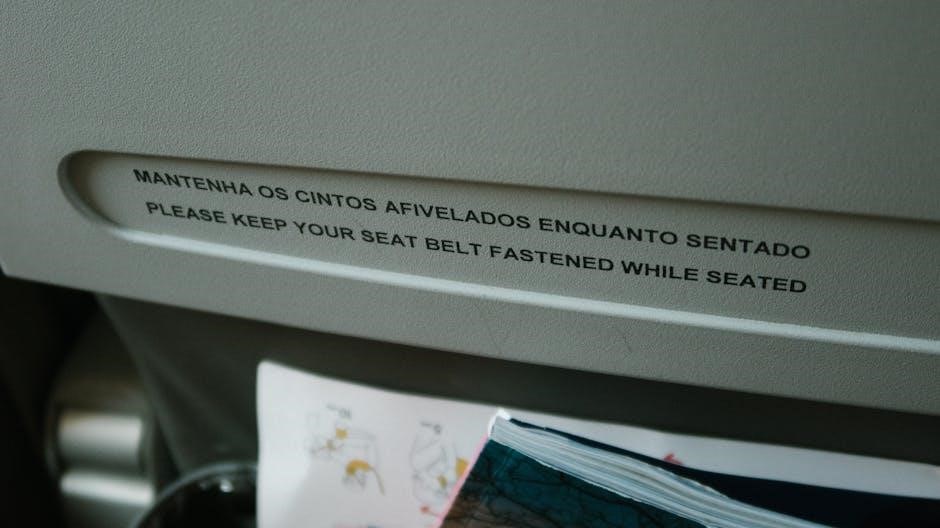Nikon D60 Instruction Manual: A Comprehensive Guide
The Nikon D60 is a digital SLR camera. This manual will help you enjoy shooting with your Nikon digital camera. Refer to the User’s Manual. It walks you through controls, menus, settings, internal options and helps you become familiar with your D60.

Downloading the Manual via Nikon Manual Viewer 2 App
To access the Nikon D60 instruction manual on your smartphone or tablet, consider downloading the Nikon Manual Viewer 2 app. This application, available for both iOS (iPhones, iPads, iPod touch) and Android devices, provides a convenient way to download and view manuals for Nikon digital SLR cameras offline.
Steps to Download and Use the Nikon Manual Viewer 2 App:
- Install the App: Search for “Nikon Manual Viewer 2” in the App Store (for iOS devices) or Google Play Store (for Android devices) and install the application on your device.
- Launch the App: Once installed, open the Nikon Manual Viewer 2 app.
- Search for Your Manual: Within the app, you can search for the manual specific to your Nikon D60. The app typically allows you to search by camera model.
- Download the Manual: Once you’ve found the Nikon D60 manual, tap the download icon or button to download it to your device. Ensure you have a stable internet connection during the download process.
- Access the Manual Offline: After the download is complete, you can access the manual anytime, even without an internet connection. This is particularly useful when you’re out in the field shooting and need to consult the manual quickly.
Benefits of Using the Nikon Manual Viewer 2 App:
- Portability: Carry the manual with you on your smartphone or tablet, eliminating the need for a physical copy.
- Offline Access: Access the manual even when you don’t have an internet connection.
- Search Functionality: Quickly find the information you need using the app’s search function.
- Zoom and Navigation: Easily zoom in on diagrams and navigate through the manual using the app’s intuitive interface.
By utilizing the Nikon Manual Viewer 2 app, you can have the Nikon D60 instruction manual readily available whenever and wherever you need it, enhancing your photography experience and ensuring you can quickly resolve any questions or issues that may arise.

Understanding the Nikon D60’s Key Features
The Nikon D60 is a digital single-lens reflex (D-SLR) camera designed to provide users with a blend of performance and user-friendliness. To fully leverage its capabilities, it’s crucial to understand its key features.
10.2 Megapixel CCD Sensor: The D60 features a 10.2-megapixel CCD sensor, enabling it to capture images with ample detail for prints and digital display. This resolution allows for cropping and editing without significant loss of quality.
Nikon F-Mount Compatibility: The camera uses the Nikon F-mount, making it compatible with a wide range of Nikon lenses, both older and newer. This provides flexibility in lens selection for various photographic needs.
3D Color Matrix Metering II: Nikon’s 3D Color Matrix Metering II system analyzes the scene to determine optimal exposure settings, taking into account factors like color, brightness, and subject distance. This helps ensure accurate and consistent exposures in various lighting conditions.
Auto ISO Sensitivity Control: The D60 can automatically adjust the ISO sensitivity based on the lighting conditions, allowing for proper exposure without the need to manually change the ISO setting. This is particularly useful in situations where the lighting is changing rapidly.
Built-in Flash: The camera has a built-in pop-up flash that can be used to provide additional light when needed. It also supports Nikon’s i-TTL flash system, allowing for more advanced flash control with compatible external flashes.
2.5-inch LCD Monitor: The D60 features a 2.5-inch LCD monitor for reviewing images and navigating the camera’s menu system. The monitor provides a clear and detailed view of your photos.
Intuitive Menu System: The camera’s menu system is designed to be user-friendly, making it easy to access and adjust various settings. The menus are organized logically, allowing for quick navigation and customization.
Continuous Shooting Mode: The D60 offers a continuous shooting mode, allowing you to capture multiple frames in quick succession. This is useful for capturing action shots or fast-moving subjects.
Retouch Menu: The camera’s retouch menu provides a range of in-camera editing options, such as red-eye correction, trimming, and filter effects. This allows you to make basic adjustments to your photos without the need for a computer.
Stop-Motion Movie Mode: The D60 has a stop-motion movie mode, which allows you to create animated movies by combining a series of still images.
Understanding these key features of the Nikon D60 will enable you to take full advantage of its capabilities and capture stunning photos in a variety of situations. By exploring the camera’s settings and experimenting with different features, you can unlock its full potential and improve your photography skills.

Navigating the Nikon D60’s Menu System
The Nikon D60’s menu system is designed to be intuitive, but understanding its structure is key to maximizing the camera’s potential. The menu is divided into several sections, each catering to different aspects of camera operation and customization. Here’s a breakdown of the main menu sections and how to navigate them effectively:
Playback Menu: Accessed by pressing the “Playback” button (indicated by a triangle) on the back of the camera, this menu focuses on reviewing and managing your captured images. Options include:
- Delete: Erases selected images or all images on the memory card. Exercise caution when using this function.
- Playback Folder: Allows you to choose which folder on the memory card to display images from.
- Slide Show: Plays back images in a slideshow format.
- Print Set: Prepares images for printing, specifying the number of copies for each image.
- Protect: Locks images to prevent accidental deletion.
- Retouch: Offers in-camera image editing options like D-Lighting, red-eye correction, trimming, monochrome effects, filter effects, and small picture creation.
Shooting Menu: This menu, accessed via the camera’s menu button, allows you to configure settings related to image capture. Key options include:
- Image Quality: Selects the file format (JPEG, RAW) and compression level for your images.
- Image Size: Chooses the resolution of your images (Large, Medium, Small).
- ISO Sensitivity: Sets the camera’s sensitivity to light. Lower ISO values are ideal for bright conditions, while higher values are used in low light.
- White Balance: Adjusts the color balance of your images to match the lighting conditions (Auto, Incandescent, Fluorescent, Direct Sunlight, Flash, Cloudy, Shade, Preset Manual).
- Optimize Image: Applies preset image styles to alter the look and feel of your photos (Normal, Softer, Vivid, More Vivid, Portrait, Custom).
Custom Setting Menu: This is where you fine-tune the camera’s behavior to match your shooting preferences. Notable settings include:
- Autofocus Settings: Adjust focus modes, focus area, and focus tracking sensitivity.
- Metering/Exposure: Configure metering modes and exposure compensation.
- Timers/AE Lock: Adjust self-timer duration and customize the AE-L/AF-L button function.
- Shooting/Display: Modify settings related to image display and shooting information.
Setup Menu: This menu contains general camera settings and maintenance options. Key options include:
- Format Memory Card: Erases all data on the memory card. Be sure to back up any important files before formatting.
- LCD Brightness: Adjusts the brightness of the LCD screen.
- Date/Time: Sets the camera’s internal clock.
- Language: Chooses the menu language.
- Video Mode: Selects the video output format (NTSC, PAL).
- Firmware Version: Displays the camera’s current firmware version.
Navigating the Menus:
- Press the “Menu” button on the back of the camera.
- Use the multi-selector (directional pad) to navigate up, down, left, and right through the menu options.
- Press the “OK” button to select a menu item or confirm a setting change.
- To exit the menu, press the “Menu” button again.
By familiarizing yourself with the D60’s menu structure and options, you can quickly and easily adjust camera settings to achieve your desired results. Experiment with the various settings to discover how they affect your images and develop your own shooting style.

Troubleshooting Common Issues with the Nikon D60
Even with proper care, you might encounter some common issues while using your Nikon D60. Here’s a guide to troubleshooting some of these problems:
Camera Won’t Turn On:
- Battery: Ensure the battery is properly charged. Try a different, fully charged battery if available.
- Battery Contacts: Clean the battery contacts and the contacts inside the camera’s battery compartment with a dry cloth.
- Power Switch: Make sure the power switch is fully in the “ON” position.
- Memory Card: Sometimes, a corrupted memory card can prevent the camera from turning on. Try removing the memory card and see if the camera powers up.
Image is Too Dark or Too Bright:
- Exposure Compensation: Check the exposure compensation setting. If it’s set to a negative value, the image will be darker. If it’s set to a positive value, the image will be brighter. Reset it to “0” for normal exposure.
- Metering Mode: Experiment with different metering modes (Matrix, Center-weighted, Spot) to see which works best for the scene.
- Aperture and Shutter Speed: If you’re shooting in manual mode (M), ensure that your aperture and shutter speed settings are appropriate for the lighting conditions.
- ISO Sensitivity: Adjust the ISO sensitivity. If it’s too low, the image will be dark. If it’s too high, the image may be noisy.
Image is Out of Focus:
- Autofocus Mode: Ensure that the camera is set to autofocus mode (AF).
- Focus Point: Select the appropriate focus point for the subject.
- Shutter Release Button: Press the shutter release button halfway down to allow the camera to focus before taking the picture.
- Lens: Make sure the lens is clean and properly attached to the camera.
- Low Light: In low light, autofocus may struggle. Try using the focus assist lamp or switch to manual focus (MF).
Memory Card Errors:
- Card Compatibility: Ensure that the memory card is compatible with the D60. Check the camera’s manual for supported card types and capacities.
- Card is Full: Delete unnecessary images or videos from the memory card;
- Card is Locked: Check the write-protect switch on the memory card. Make sure it’s in the “unlocked” position.
- Card Corruption: Try formatting the memory card in the camera. Note that formatting will erase all data on the card, so back up any important files first.
LCD Screen is Blank or Displays Incorrectly:
- LCD Brightness: Adjust the LCD brightness setting in the setup menu.
- Sleep Mode: The camera may be in sleep mode. Press the shutter release button halfway down to wake it up.
- Battery: A low battery can sometimes cause the LCD screen to malfunction. Try replacing the battery with a fully charged one.
Images Have Color Casts:
- White Balance: Adjust the white balance setting to match the lighting conditions.
- Picture Control: Check the Picture Control setting. Different Picture Controls can affect the color and tone of your images.
The Flash Isn’t Firing:
- Flash Mode: Make sure the flash is enabled in the shooting menu;
- Flash is Disabled: Some shooting modes (like “Landscape”) disable the flash. Choose a different shooting mode.
- Flash is Charging: Wait for the flash to charge before taking a picture. The flash ready indicator should be lit.
If you’ve tried these troubleshooting steps and are still experiencing issues, consult the Nikon D60’s user manual or contact Nikon customer support for further assistance.
Lens Compatibility with the Nikon D60
Understanding lens compatibility is crucial to getting the most out of your Nikon D60. The D60, being a digital SLR camera with a Nikon F-mount, can utilize a wide variety of lenses, but there are certain considerations to keep in mind.
Nikon F-Mount Lenses:
The Nikon D60 uses the Nikon F-mount, which has been around for decades. This means it’s potentially compatible with a vast selection of lenses, both old and new. However, not all F-mount lenses are created equal in terms of compatibility with the D60’s features.
AF-S and AF-I Lenses (Recommended):
For full autofocus functionality, it’s highly recommended to use AF-S (Autofocus Silent Wave Motor) or AF-I (Autofocus Internal) lenses. These lenses have built-in autofocus motors, allowing the D60 to autofocus quickly and accurately. The D60 itself does not have a built-in autofocus motor, so it relies on the lens to provide autofocus capabilities.
AF Lenses (Limited Compatibility):
Older AF (Autofocus) lenses, which do not have a built-in autofocus motor, will not autofocus on the D60. You can still use these lenses, but you’ll have to focus manually. This can be challenging, especially for moving subjects.
DX Lenses:
The D60 has a DX-format sensor, which is smaller than a full-frame (FX) sensor. DX lenses are designed specifically for cameras with DX-format sensors. They are generally smaller, lighter, and more affordable than FX lenses. Using a DX lens on the D60 is perfectly fine and often recommended.
FX Lenses:
FX lenses are designed for full-frame cameras, but they can also be used on the D60. However, because the D60 has a smaller DX-format sensor, the field of view will be cropped. This means that the lens will appear to have a longer focal length than it actually does (approximately 1.5x). For example, a 50mm FX lens will have an effective focal length of 75mm on the D60. While FX lenses can be used, they may be larger and more expensive than necessary for the D60.
Non-CPU Lenses (Manual Focus Only):
Non-CPU lenses are older lenses that do not have electronic contacts to communicate with the camera. These lenses will not autofocus, and you’ll have to set the aperture manually using the aperture ring on the lens. The D60 will not be able to meter correctly with non-CPU lenses, so you’ll have to use an external light meter or rely on your experience to determine the correct exposure settings.
Third-Party Lenses:
Many third-party lens manufacturers, such as Sigma, Tamron, and Tokina, make lenses that are compatible with the Nikon F-mount. When choosing a third-party lens, make sure it is specifically designed for Nikon cameras and has autofocus capabilities (AF-S or equivalent).
Lens Recommendations:
- Kit Lens (18-55mm): The standard kit lens that often comes with the D60 is a good starting point for general photography.
- 50mm f/1.8 AF-S: A versatile and affordable prime lens that’s great for portraits and low-light photography.
- DX Zoom Lenses: Consider other DX zoom lenses for different focal length ranges, such as a wide-angle zoom (e.g., 10-24mm) or a telephoto zoom (e.g., 70-300mm).
Before purchasing a lens for your Nikon D60, always check its compatibility and read reviews to ensure it meets your needs.